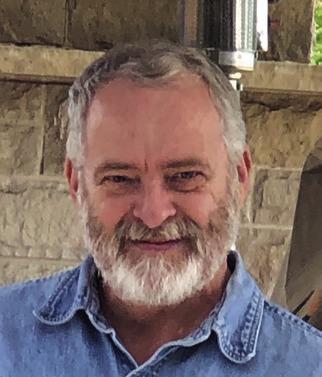Evolutioncannotexplainbiological complexity without violating some very basic laws of nature, specifically, The Second Law of Thermodynamics. If you recall, we mentioned The Second Law of Thermodynamics a few weeks ago to help us establish that the stars have a limited fuel supply and that eventually all the stars will run out of fuel leaving the universe very dark and very cold. Since the stars have not run out of fuel, the universe must have had a beginning which suggests a Beginner. However, another aspect of The Second Law of Thermodynamics is that all systems naturally tend toward disorder. Scientists call this entropy, but everyone knows that the housetendstowardmessyratherthan clean, the lawn tends toward looking ragged rather than fresh mown. All systems tend toward disorder. Have you ever seen an orderly abandoned house?
Darwinian evolution, on the other hand, requires the opposite to be true: that unguided systems naturally go from simple to complex. As we saw last week, the “evolution” of the eye is a great example. Darwinian evolution says that the first “eye” appeared as a cluster of light-sensitive cells on the surface of some prehistoric lifeform. Over millions of years random, unguided mutations (and not just any mutations but only mutations that have a positive influence on the species) added layers of complexity to this cluster of light-sensitive cells eventually forming the modern human eye:stepbystepfromverysimple to extremely complex. But here’s the rub; simple to complex is in direct violation of one of the most honored and time-proven laws of nature: The SecondLawofThermodynamics.And it is not just the human eye, life is full-filled with irreducibly complex systems.
Biochemist Michael Behe explains the huge the leap of faith required of the evolutionist to go from simple to complex using the hypothetical example of a bicycle and a motorcycle. Behe says that for a bicycle to evolve into a motorcycle requires hundreds, maybe thousands of random steps that must be made in the right order, andeachonemustofferabenefittothe species. Take your everyday bicycle, add to it a motorcycle engine block as a first evolutionary step. Now, that is not much of a benefit. In fact, all that has done is add a good deal of useless weight. But the bicycle is far from being a functional motorcycle. The engine block needs pistons with rings; attached to a crankshaft; that runs on bearings; that are oiled by a lubrication system which requires oil. Not to mention spark plugs, fuel tank, valves, clutch, transmission, drive train, on and on it goes. In fact, the simplest motorcycle imaginable is an irreducibly complex system because until each and every part is in place and functional, the motorcycle is not a functioning motorcycle but is rather a very heavy, useless bicycle. How do you get from a bicycle to a motorcycle through random steps over millions of years? In the words of the Christian apologist Norman Geisler; “I don’t have enough faith to be an atheist.”
Astronomer Fred Hoyle summed up the absurd improbability that irreducibly complex systems in biology, and in human beings developed by slight genetic mutations over long periods of time. Hoyle said “The chance that higher life forms might have emerged through evolutionary process is comparable to the chance that a tornado sweeping through a junkyard might assemble a Boeing 747 from the materials therein.”
The universe is highly fine-tuned for life showing that the universe had a purposeful Designer. Design is also evident in a multitude of biological systems including human beings. Looking at the fine-tuning of the universe and the complexity of biological systems that are observed, there are some additional things we cansayabouttheFirstCausewhocreated everything. From what we have looked at concerning the fine-tuning of the universe, and the irreducible complexity in biological systems, we can say that “The design, unity, order and complexity of creation itself implies the Creator of the universe is a highly intelligent Designer who purposefully designed and brought the universe into existence with such precise characteristics as to allow human life to thrive.”
But what is the purpose? If we say that the Creator of the universe is a purposeful Creator, then He must have had a purpose when He created mankind. If we step back and take a look at all created life there is little doubt that man sets at the peak of creation. And not by just a tiny bit. Man is far and away more advanced than the primates. The one characteristic that sets humans far above the rest of creation is man’s capacity for self-consciousness, and high intelligence. But if we are just a bunch of atoms, as evolution argues, then “How do you get from simple atoms, to self-consciousness, and complex human thought?”
That is an important question, and we will get back to it in a couple of weeks. However, at this point in our conversation with the Bible skeptic Michael, he may very well ask an important question: “Isn’t the idea of God just something human beings makeup in their mind as a coping mechanism?” After all, isn’t it easier to face life’s hardships if you have convinced yourself that there is a God who cares? Even if there really is no such God? Join us next week as we take a short detour in order to answer Michael’s important question.
Gloria in excelsis Deo!
Ty B. Kerley, (DMin. candidate, The Southern Baptist Theological Seminary) is an ordained minister who teaches Christian apologetics, and relief preaches in Southern Oklahoma. Ty and his wife Vicki are members of the Waurika church of Christ, and live in Ardmore.

